Common Snipe, Watersnip, Bekassine-gallinago, Narceja-comum, Agachadiza común
Spotted in the Alentejo region of Portugal. Common Snipe sound
The Common Snipe (Gallinago gallinago) is a small, stocky wader native to the Old World. The breeding habitat is marshes, bogs, tundra and wet meadows throughout northern Europe and northern Asia. It is migratory, with European birds wintering in southern and western Europe and Africa (south to the Equator), and Asian migrants moving to tropical southern Asia.
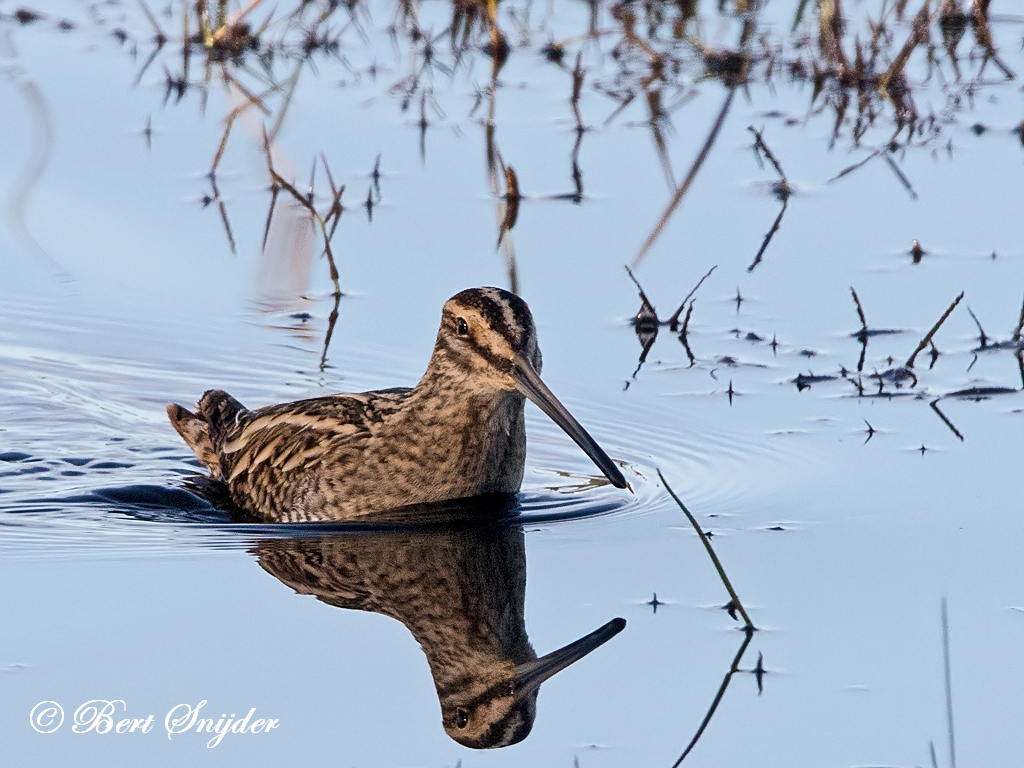
More photos at the bottom of this page.
Adults are 25–27 cm in length with a 44–47 cm wingspan and a weight of 80–140 g (up to 180 g pre-migration). They have short greenish-grey legs and a very long (5.5–7 cm) straight dark bill. The body is mottled brown with straw-yellow stripes on top and pale underneath. They have a dark stripe through the eye, with light stripes above and below it. The wings are pointed.
It is the most widespread of several similar snipes. It most closely resembles the Wilson’s Snipe G. delicata of North America, which was until recently considered to be a subspecies G. g. delicata of Common Snipe. They differ in the number of tail feathers, with seven pairs in G. gallinago and eight pairs in G. delicata; the North American species also has a slightly wider white edge to the wings. Both species breed in the Aleutian Islands. It is also very similar to the Pin-tailed Snipe G. stenura and Swinhoe’s Snipe G. megala of eastern Asia; identification of these species there is complex.
There are two subspecies of Common Snipe, G. g. faeroeensis in Iceland, the Faroes, Shetland and Orkney (wintering in Britain and Ireland), and G. g. gallinago in the rest of the Old World.
It is a well camouflaged bird is usually shy and conceals itself close to ground vegetation and flushes only when approached closely. When flushed, they utter a sharp note that sounds like scape, scape and fly off in a series of aerial zig-zags to confuse predators. They forage in soft mud, probing or picking up food by sight. They mainly eat insects and earthworms, also some plant material.
The male performs “winnowing” display during courtship, flying high in circles and then taking shallow dives to produce a “drumming” sound by vibrating its tail feathers. This sound has been compared by others to the bleating of a sheep or goat; hence in many languages the Snipe is known by names signifying “Flying Goat,” “Heaven’s Ram,” as in Scotland by “Heather-bleater” and in Finnish the name taivaanvuohi, “sky goat”. Common Snipe nest in a well-hidden location on the ground, laying four eggs of a dark olive colour, blotched and spotted with rich brown, which are incubated by the female for 18–21 days. The young when freshly hatched are covered in down of a dark maroon, variegated with black, white and buff. The young are cared for by both parents, each parent looking after half the brood, with fledging in 10–20 days.
Overall, the species is not threatened. Populations on the southern fringes of the breeding range in Europe are however declining with local extinction in some areas (notably in parts of England and Germany), mainly due to field drainage and agricultural intensification. The Agreement on the Conservation of African-Eurasian Migratory Waterbirds (AEWA) applies to the species. It is still hunted as a gamebird in much of its range.


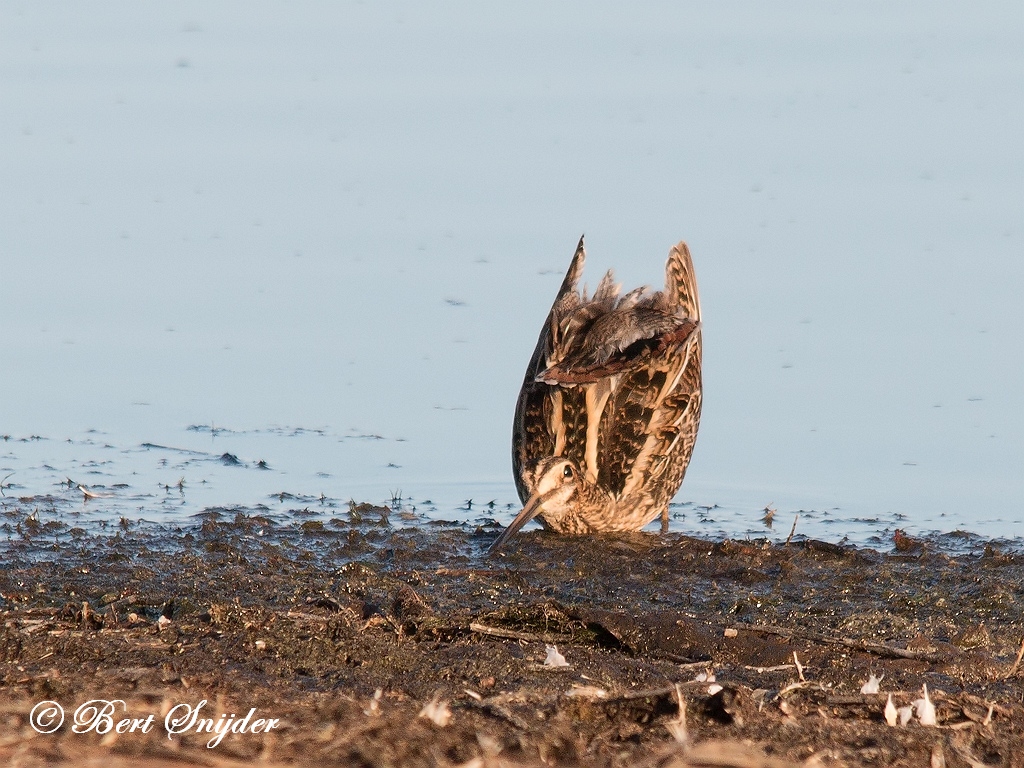

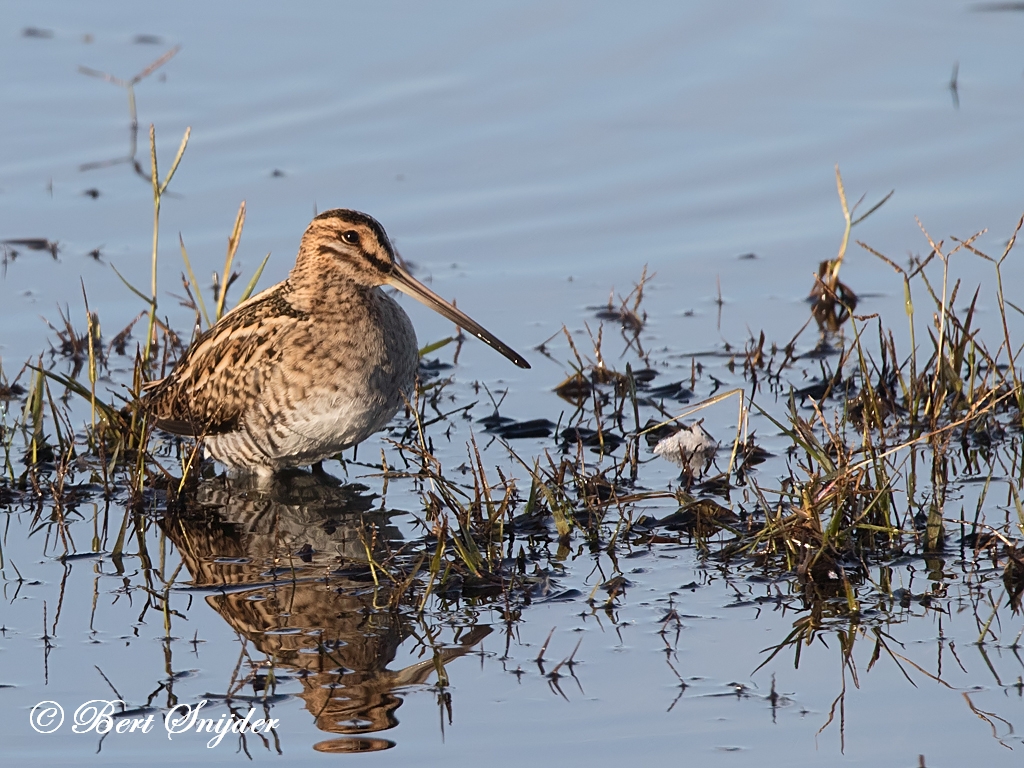


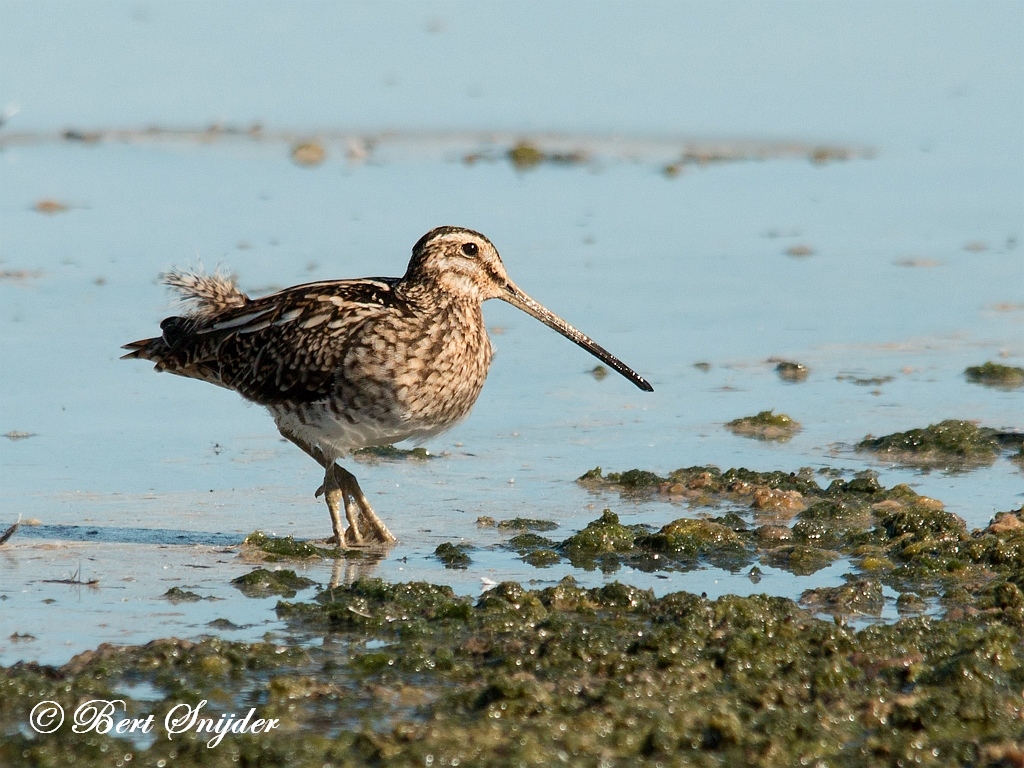
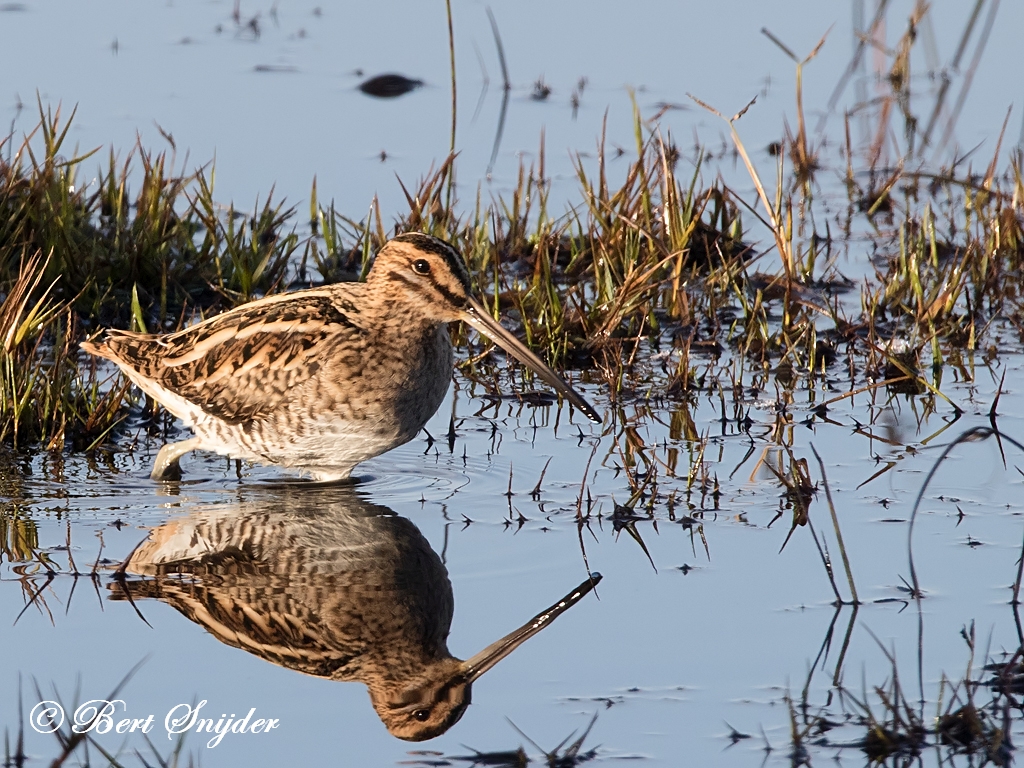
Other synonyms:
Asturian: Gacha
Breton: Ar gioc’h lann, Gioc’h
Catalan: Becadell comú, Bequet, Cegall
Catalan (Balears): Cegall
Valencian: Bequet
Czech: Bekasina otavní, Bekasína otavní
Welsh: Dafad y gors, Gafr y gors, Gïach, Gîach gyffredin, Gïach gyffredin, Gîach myniar, Ysniden, Ysniten
Danish: Dobbeltbekkasin
German: Bekassine, Bekassine-gallinago
Emiliano-romagnolo: Cavartén
English: Common Snipe, Eurasian Snipe, European Snipe, Fantail Snipe, Palearctic Common Snipe, Snipe
Esperanto: galinago
Spanish: Agachadiza Comun, Agachadiza Común, Becacina común, Becardón
Spanish (Argentine): Becasina Común
Spanish (Costa Rica): Becacina común
Spanish (Mexico): agachona común
Spanish (Nicaragua): Agachadiza Común
Estonian: Taevasikk, Tikutaja, Tikutaja e. taevasikk, Tikutaja, taevasikk
Basque: Becadell comú, Istingor, Istingor arrunta
Finnish: heinäkurppa, Taivaanvuohi
Faroese: Døggreyv, Mýrisnípa
French: Bécassine des marais
Frisian: Waarlamke
Irish: Meath gabhar, Mionnán aeir, Naosach, Naoscach
Gaelic: Budagochd, Croman Loin, Gabhar-Adeir, Naosg
Galician: Becacina, Becadell comú
Manx: Coa r Heddagh, Coa y r Heddagh, Coar heddagh, Coayr Heddagh
Croatian: Šljuka Kokošica
Hungarian: Sárszalonka
Indonesian: Berkik Ekor-kipas
Icelandic: Hrossagaukur
Italian: Beccaccino
Japanese: Tashigi, Ta-shigi
Cornish: Kyogh
Latin: Capella gallinago, Gallinago gallinago, Gallinago gallinago gallinago
Malay: Berkek Ekor Kapas
Dutch: Watersnip
Norwegian: Enkeltbekkasin, Mekregauk
Polish: (bekas) kszyk, Bekas, bekas kszyk, kszyk, kszyk (bekas)
Portuguese: narceja, Narceja-comum
Portuguese (Brazil): narceja
Romansh: Becassina da palì
Scots: An meannan-adhair, Budagochd, Croman loin, Gabhar-adheir, Naosg
Northern Sami: Meahkástat
Slovenian: kozica, kozice
Albanian: Shapka e ujit, Shapkë uji
Serbian: Barska šljuka, Barska šljuka, bekasina, bekasina
Swedish: Enkelbeckasin
Swahili: Sululu
Travel Birdwatching Holiday Alentejo, Vacation Portugal for birders to see birds on your trip. Guided Birdwatching Tours & Trips.